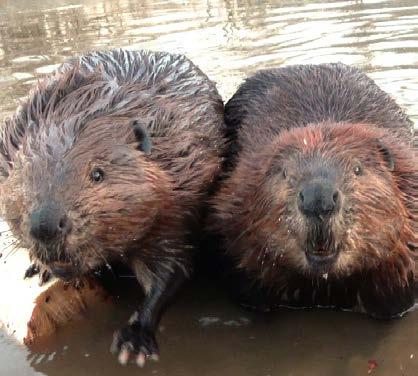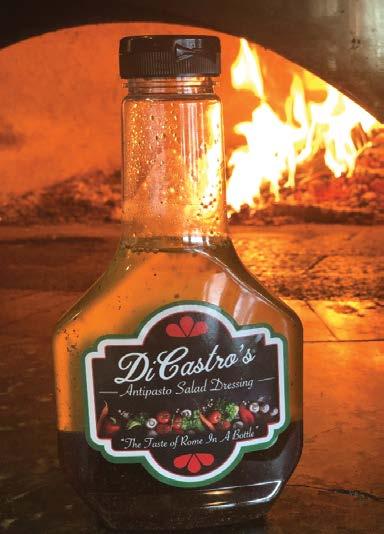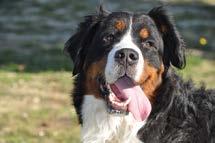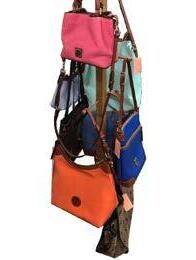

Thank You For Your Holiday Drive Support from the Steet Ponte Auto Group!
This year, the Steet Ponte Auto Group came together with YOU, our community members, to break records for our Annual Holiday Drives. We are so grateful for your generosity this year. Whether it was donating a coat, food, gift, or simply sharing our social media posts, we are thankful for your part in helping give back to our community members in need!



Our First Annual Backpack & School Supplies Drive held at the end of August was a success. We donated 504 backpacks filled with supplies to 19 elementary schools in: Utica, Herkimer, Frankfort-Schuyler, Ilion, Johnstown, and Gloversville.
Our 7th Annual “Coats for Kids” Drive held in October broke an all time record, collecting 1,017 items of winter outerwear for students in Utica, Rome, Herkimer, CVA, Amsterdam and Broadalbin-Perth Elementary Schools.
Our Food Drive was so large, we were able to fill 10 vehicles of food between our 8 stores! We were proud to be able to fill the whole basement pantry at the Thea Bowman House in Utica, as well as 2 car loads each to Catholic Charities of Herkimer County, and the Amen Place Soup Kitchen in Amsterdam, providing a nourishing Thanksgiving for those in need.




And finally, our 17th Annual Holiday Gift Drive collected 552 gifts and also gift-wrapping supplies for the Adopt-a-Family program through ICAN in Oneida and Herkimer Counties, as well as for adopted families through Amsterdam and Gloversville Schools.
Once again, we are so grateful for the continued support, and look forward to a wonderful 2025!

Thank you, from the Steet and Ponte Families, and the entire Steet Ponte Auto Group!





VISA PLATINUM CREDIT CARD
Ever Get Cold Feet?
ALPACA SOCKS ARE THE ANSWER!
Stocking Hats, Mittens, Gloves, Headbands, Over “50” Styles of Alpaca Socks, Fur Slippers, Furry Animals, Fur Rugs & Pillows, Sweaters, Jackets, Vests, Scarves, Sport Bags & more.

Survival Socks
ALPACA is for Year-Round Comfort
*Up to 5X Warmer than Wool
*Naturally Water & Odor Resistant *Highly Anti -microbial
*Softer than Cashmere
*Alpaca keeps your feet cool and dry in the Heat, but Warm in the Cold

78% Alpaca. Reinforced bottoms. The Hunters Favorite. Best Selling “Cold Weather” Sock!
Stocking over 2200 SqFt of Alpaca Products

Alpaca Hiker Socks

Everyday Sock. Medium Weight. Moisture Wicking. 50% Alpaca. A BEST Seller!
Skier Socks Made Especially for Ski Boots. Thin with Padding. Moisture Wicking. WARM - 70% Baby Alpaca







Ski & Snowmobile Alpaca Socks Tall, Heavy Weight & Stays in Place!






Heavy Boot Socks Cold Weather Sock. Warm & Cozy! Great for Winter Activities!






Next Issue: February 1st
On the cover: Oil painting, First Shift, The Mill Little Falls, N.Y by Bob Willman. Facewbook: Willman Gallery • www.bobwillman.com
To See What We Can Be!
by Sharry L. Whitney
Do you remember the resolutions you made when you were younger? If you’re anything like me, your goals were simple— things like lose weight, pick up a hobby, drink more water, or run the Boilermaker. I call them “simple,” not because they were easy, but because they were clear and measurable—almost like a checklist. As I’ve gotten older, my resolutions have become broader, like: be more mindful, nurture relationships, and practice gratitude. These goals, though, are harder to measure.
With the wisdom that comes with age, I’ve realized that any specific, quantitative goals—like “read ten novels this year”— tend to happen naturally as a byproduct of my larger, more qualitative resolutions. When I’m more mindful and positive, I’m more likely to, curl up with a good book, reach out to friends, or cook a healthy meal—not because they’re on a to-do list, but because I’m present enough to choose those positive actions.
Maybe I’m just feeling a bit reflective as this year comes to an end and I look back on the past 20 years of Mohawk Valley Living. In the early days, balancing the TV show and magazine with raising three boys was quite a whirlwind. Now, as we begin 2025—MVL’s 20th anniversary—I hope to bring that resolution of mindfulness and positivity into our work. I hope to make MVL a broader, more meaningful resource for our community—not just to “see what we can see,” as our theme song suggests, but to see what we can be! •



Riggie is roaming around and hiding in the advertising areas of the magazine. Next to him you’ll find a letter. Find all the Riggies and rearrange the letters to answer this riddle. Submit your answer by the 15th of the month to be entered in drawing for a $100 shopping spree at the advertiser of your choice!
(Excluding media and banks) One entry per household per month. Mail to: Riggie’s Riddle, 30 Kellogg St., Clinton, NY, 13323 or email: mohawkvalleyliving@hotmail.com
NOTE: Please enter Riggie’s Riddle and crossword puzzle in separate emails.
OnthecornerofVanderkempandPark in Oldenbarneveld stands a house once home to Madame De Castro, the hamlet’s last ____ ____.
Hint: 2 words, 12 letters

The answer to last month’s riddle about a Polish Christmas Eve meal: Wigilia Winner: Annette Hand of Marcy

Answer to last Month’s puzzle about this destination for light displays:
Trinkaus Manor
Winner: Kate Tylutki of Palatine Bridge
A Year in the Life of the Spring Farm Beaver Colony part
1
by matt perry

We began the 2024 season with six or seven Beavers living in the Spring Farm Beaver colony. This included the matriarch and patriarch, Tippy and GenLo; three yearlings who would turn two years old in the spring—Tosh, Pippen, and Fuji—and one or two kits born the previous spring: Chinquapin, and possibly Wigeon. By this point in the season, Wigeon, who had some health issues (the most serious being blindness), hadn’t been seen for over a month and was thought lost.
The Beavers were inhabiting a large bank lodge at Julia’s Pond, a water impoundment on the nature sanctuary’s east/ west-flowing stream. Julia’s Pond was created by them over five years earlier and was subsequently named for the colony’s former matriarch.
Tippy and GenLo would turn twelve in the spring, making them the oldest Beavers we had ever had on the property. The lifespan of wild Beavers tops out between ten and fifteen years, though most don’t reach their full potential due to human-related causes. Having never had Beavers of such advanced age, I wondered how it would affect the colony. Would they continue to reproduce each year? So far, neither Tippy nor GenLo seemed to be slowing down, and both were actively involved in gath-
ering food and maintaining the dam and lodge.
In the last days of December 2023, persistent rain swelled the streams, and mud was everywhere. That changed quickly on the morning of January 1st when the temperature dipped into the low twenties and snow covered the ground. Still, the pond water remained relatively warm, and no ice formed. Mild weather meant the Beavers could remain in food-caching mode. With no deep snow on the land and no ice on the water, they could roam to gather trees for their food cache.

On New Year’s Day, Tosh and Fuji emerged, as did both parents. Tippy and Fuji seemed more anxious than usual. Tippy came over to me, but something startled her, causing her to make a quick, splashy retreat. She then swam to the middle of the pond to assess the threat. After a few minutes of silent floating, she decided everything was fine. She swam back and took a sweet potato from me—the Beavers’ favorite treat, but she did so slowly and with extreme caution. In contrast, GenLo and the other two yearlings, Pippin and Tosh, behaved normally and didn’t seem worried.

on 2 floors!
Antiques • Art • Crafts Open 6 days a week, 10-5, Closed Tues
Handicapped-accessible • 315-823-4309
Thruway Exit 29A, 25 West Mill St., Little Falls www.littlefallsantiquecenter.com
Muskrats inhabit the Beaver ponds yearround and live in the Beavers’ lodge. However, they don’t share the Beavers’ living chamber. Instead, they occupy their own “apartment” and often help themselves to the Beavers’ food cache, constantly pilfering stored edibles and any produce or branches I bring. Indeed, it would be hard to find another animal that benefits more from associating with another species than Muskrats do from living among Beavers.
On January 3rd, the ponds remained icefree, and the Beavers were active the entire day—dragging back trees and adding them to their food cache. In late morning, GenLo dragged the willow branches I had left on the trail back to the pond. He passed me on
















GenLo is the colony’s patriarch

the trail but didn’t startle and continued his work.
Fuji was engaged in a counterproductive activity: he was burrowing into the dam at Julia’s Pond right at the waterline. I couldn’t guess why. Perhaps he wanted his own den away from the others, especially if breeding season tensions were running high. I had yet to see any signs of GenLo acting ornery, though. Clearly, making a large hole in the dam could severely compromise it, leading to a catastrophic collapse—hard to fix in winter when mud can freeze and become unworkable. Fortunately, the Beavers promptly addressed this issue, and by the next morning, Fuji’s hole had been patched.
The first persistent blast of winter
weather arrived at the start of the second week of January. On the 8th, there were eight inches of snow on the ground and temperatures were in the 20s. Still, only a small portion of the pond surface had frozen. At this time, Tippy was the only Beaver emerging in the morning; the others came out in the afternoons. GenLo took his potato on his “porch,” the narrow area of shallow water on the west side of the lodge. Unlike most of the other Beavers, GenLo would only accept his treat if it was either tossed to him or offered from the end of a pole. He had only taken treats directly from my hand a couple of times in the last decade. His son, Chinquapin, was much the same—consistently timid about approaching too closely.
On the 12th, GenLo began following Tippy closely and making what I interpreted as amorous vocalizations. This was the first mating behavior I had seen this season.
On the 15th, the temperature dipped into the low single digits.

What had previously been all mud was now ice, covered by fresh snow. The pond was sealed with the thickest ice so far that winter, and I broke holes to provide food for the Beavers and to continue monitoring them. The persistent wind made it difficult to remain at the pond. Unlike their chronicler, the Beavers suffered little in such harsh conditions. Their dense fur and a thick layer of fat provided outstanding insulation. By the last week of January, winter had stalled. Temperatures rose above freezing. Heavy rainfall melted the snow, causing the sanctuary’s streams to rise to flood stage.



Most of the ice at the Beavers’ ponds melted rapidly. In mid-afternoon on the 26th, Chinquapin was out in the pond but seemed more timid than usual. He wouldn’t come close enough to take a treat even from the end of the pole. Perhaps a predator had recently visited the pond—prowling the shore overnight. I had found evidence of Coyotes and Bobcats in the area.
In the first days of February, trail camera footage near the lodge showed the Beavers actively working on the lodge roof at night—waterproofing it with mud. This type of work is typically not possible during the winter due to ice cover. Late in the morning on February 3rd, GenLo accepted a sweet potato from the end of the ski pole. What was unusual was that he shook his head first. Generally, a Beaver’s head shake is interpreted as a sign of cheerful anticipation. In other words, GenLo was happy—not an emotion commonly associated with him.
On February 27th, the temperature surged above 60 degrees. The Beavers were heard vocalizing extensively inside the lodge. I wasn’t sure what it meant, but dispersal time for the colony’s three yearlings was at hand. They were nearing their second birthday, and two-year-olds rarely remain in their parents’ colony. With that in mind, we expected Tosh, Pippin, and Fuji to slip away in the night.
On the last day of February, we were plunged back into winter, and by the morning of March 1st, eight inches of snow covered the ground. It was also cold, with low temperatures in the high single digits. Ice had formed on Julia’s Pond once again. A Mallard flock of about 80 congregated in the ice-free waters at the pond’s center, while


Elevate Your Space interiors


The holidays are over, but there is still time to see the season’s displays like the Nutcrackers at the Oneida County History Center in Utica and the gorgeous window displays at Michael J Uvanni Interiors at 1001 East Dominic St., Rome




Tippy takes her favorite treat – a sweet potato
Two-year-old Fuji left the colony in the spring

the newly returned goose family occupied the shore. All the Beavers, including GenLo and Chinquapin, emerged in the afternoon that day. When Tippy came out, she seemed to focus on the willow branches I had dragged over but hadn’t yet placed into the water. She signaled her desire by slowly swimming to the middle of the open water area and floating in place, watching me. I tossed in the willow, and she immediately swam over, began disassembling a bough, and munched noisily on its bark.
If March arrived like a lion, it soon became a kitten. High temperatures reached the fifties, and the snow and ice rapidly disappeared. The Beavers once again changed their emergence schedule and were no lon-
ger seen in the afternoons, although Tosh was late to adapt and continued coming out. At night the Beavers were leaving the pond to forage. They traveled up the berm trail between Julia’s Pond and Wick’s Pond, spending time on the latter pond’s east shore—enjoying grooming sessions and snacking on cattails pulled from the shallows.
In mid-March, rain returned, accompanied by mild temperatures. The Beavers resumed emerging in the mornings. Both parents came out on the 15th, approaching me for treats in their characteristic ways—GenLo swimming over to the side of the lodge and waiting on his porch, and Tippy trudging through the shallows to meet me on the shore. Typically, Tippy swims up slowly. Upon reaching shore, she plods toward me, rising onto her hind legs and extending her hands as far as her stout arms allow, splaying her well-articulated fingers. She then opens her mouth to accept the treat, revealing four oversized orange incisors.
March continued into its third week doing what it does best—being unpredictable.
A few days of cold, snowy weather were followed by a few days of milder temperatures. While I was still seeing Tosh and Pippin, Fuji hadn’t appeared for about a few weeks, indicating he had likely left the colony.
In the last days of March, the weather was relatively chilly and dry. The Beavers once again stopped emerging regularly during the day. I could only monitor them by noting which projects showed signs of nighttime work and reviewing trail cam footage. The camera captured images of







Tippy is the colony’s 12-year-old Matriarch

Cold Cuts, Pecorino Romano, Ricotta, Mozzarella, Imported Provolone, & much more!
VisitusforallyourItalianFavorites! You’llloveourprices!
1150 McQuade Ave., Utica
Mon, Thurs, Fri: 8-4, Wed: 8-3, Sat: 8-Noon, Closed Sun & Tues • 315-724-5578





Come see us for all your maple syrup products! Call
8874 Tibbitts Rd., New Hartford 315-793-3114

www.facebook.com/tibbittsmaple www.tibbittsmaple.wordpress.com

LIQUORS & WINES

Cheersto2025! Raisea glassto aNewYear &New Beginnings! Welcome to the Station! OPEN 7 DAYS A WEEK! Mon-Sat 9am-9pm, Sun 12pm-6pm HALF & FULL CASE DISCOUNTS

8231 State Route 12, Barneveld (315) 896-4444





Chinquapin became a yearling in May

Beavers traveling over the ramp at Julia’s Pond and into Lucy’s Pond. Sometimes two or three Beavers followed one another closely, forming a comical “Beaver train.”
These photos indicated that at least two of the twoyear-olds remained with the colony—presumably Tosh and Pippin. If both had decided not to disperse, it would mark the first time in the colony’s long history that two two-year-olds defied the usual edict to leave in the same season.
The cold spell broke in the last week of April. A front carrying rain and thunderstorms moved through, and temperatures climbed. On the 28th it reached 70 degrees. Trees wasted no time leafing out. Precipitation, combined with the Beavers’ maintenance of the dam at Julia’s Pond, brought water levels to their highest point all season. One morning, GenLo was seen on the lodge roof, moving branches and mud, perhaps fixing a leak.
In early May, the Beavers didn’t emerge much during the day. However, I occasionally heard lively conversations taking place inside the lodge. Although I listened carefully for the high-pitched mewing of new kits, I heard none.
On May 11th, GenLo was feeding outside, near the lodge. As he ate, I noticed a tick attached next to his eye.

A Muskrat perches on the Beavers’ food cache

In the summer of 2023, a species of tick called the Pale Beaver Tick—a specialist parasite on aquatic mammals— plagued our Beaver colony. The ticks particularly tormented the older Beavers. They are adapted to attach themselves inside nostrils, ear canals, and mouths—all places protected from water. The engorged ticks’ white abdomens stand out against the Beavers’ dark skin, making them easy to spot. If GenLo had ticks, Tippy would likely be suffering as well, even as she prepared to give birth.
On the afternoon of the 16th, I heard high-pitched mewing calls emanating from the lodge. There were two or three distinct voices—meaning two or three new kits inside. Of course, I would have loved to see them, but Beaver kits typically don’t leave the lodge for a month or more, so I would need patience.
The third week of May brought unseasonably warm weather. On the 21st, the temperature surpassed 80 degrees. In the mid-afternoons, Pippin, Tosh, and Chinquapin regularly came out. Chinquapin was becoming a workaholic. On the 21st, he spent the afternoon diligently working on Julia’s Pond dam, plastering it with mud. As he approached the dam with an armful of mud, a large Snapping Turtle suddenly appeared over the brim. Startled, Chinquapin dropped his load and made a swift, splashing dive underwater.
GenLo was increasingly suffering from ticks and had several in one nostril. In the afternoon, I inspected the twoyear-olds and Chinquapin, and to my relief, found no ticks on them. Chinquapin and Pippin spent a lot of time working on Julia’s Pond dam, ferrying mud and branches to it. All three came over for sweet potatoes. As usual, Chinquapin didn’t approach as closely as his older siblings and preferred the “shish kebab” method—taking the treat from the end of a pole. He often hesitated before taking it, freezing a few inches away to ensure the vegetable made no suspicious moves.
On the last day of May, Tippy emerged in the late afternoon. I hadn’t seen her in over a month, but she came straight up to me and asked for a treat. She was clearly lactating. It was likely no coincidence that Tippy started coming out on the day I introduced Aspen branches with green leaves into the pond rather than the leafless willow I had been providing. She took a leafy branch back into the lodge, after which I heard at least two kits calling, perhaps enjoying their first solid meal.
The second week of June brought rain and cooler temperatures, with nighttime lows dipping to 50 degrees. It was evident that the Beavers had been working on the dam





Tippy tows a log back to the lodge
overnight. Chinquapin was seen working on it in the afternoon. On the 11th, Tippy temporarily ignored her Aspen leaves to inspect the entire structure. Perhaps her heightened interest stemmed from how secure the lodge’s underwater entrances were and how close the chamber’s platform was to the waterline. With young kits inside the lodge, their safety was her main concern. Temperatures rose in the third week of June, with daytime highs in the high 80s. Water levels at Julia’s Pond remained high. The usual four Beavers were emerging around 2:00 PM. I heard the voices of
three new kits calling inside the lodge, but I hadn’t seen them yet. If they had started leaving the lodge, it must have been after dark. As for GenLo, he hadn’t been seen for weeks and was likely doing all his work at night. On the 24th, Chinquapin surprised me by stepping out of the water and walking up to the observation shelter. Was he about to ask me for a treat? He became frightened when I tried to hand him something, quickly turning around— half-running and half-hopping back down the trail—and lunged into the water with a loud splash. •
Part two of this article will appear in the February issue of Mohawk Valley Living magazine.



Kountry Market










Matt Perry is Conservation Director and Resident Naturalist at Spring Farm CARES in Clinton. He manages a 260 acre nature preserve which is open for tours by appointment. His nature videos and photos can be found on the Spring Farm CARES’ Nature Sanctuary Facebook page.
the mvL restaurant guide
























































































































































final weeks: Modern Women Modern visions
by Katherine Voce Munson Communications Manager
The intriguing exhibition “Modern Women | Modern Vision: Photographs from the Bank of America Collection,” on view through Jan. 12 at Munson Museum of Art in downtown Utica, is drawing to a close. “Modern Women | Modern Vision” highlights the bank’s renowned collection of more than 80 images created exclusively by women artists spanning much of the last century to the present.
The exhibition has been well-received from Museum visitors, receiving comments including “fabulous collection,” “informative and impactful,” and “left me wanting more!”
Diverse in style, tone, and subject, these legendary images range from spontaneous to composed as well as monumental to intimate in scale. “Modern Women” reveals the bold and dynamic ways women artists have contributed to the development and evolution of photography in the face of discrimination by critics and consumers alike.
“I am delighted the Museum of Art was able to share this meaningful exhibition with our visitors,” said Mary Murray, curator of Modern and Contemporary Art at Munson. “It has been the best balance between familiar—even iconic—images by pioneers of photography and thought-provoking, beautiful work by the generations who followed.”
Women photographers have played a vital role in framing the modern experience through the lens of the camera. They have embraced the art form from its introduction in 1839 through the technological developments of the early 1900s and have used their perspective to produce extraordinary views of the world around them.
Women have negotiated waves of social, political, and economic change, increasingly leveraging the camera as a means of creativity, financial independence, and personal freedom.
Céline van Balen (Dutch, born 1965), Untitled, 1998, chromogenic print mounted on aluminum. Bank of America Collection. Courtesy of the artist


Disrupting the longstanding constraints placed on women’s social behavior and gender roles, early trailblazers helped establish photography as a vital form of creative expression. They also laid the groundwork and served as role models for subsequent generations of artists.
The exhibition unfolds through a closer look at six themes within the collection: Modernist Innovators; Documentary Photography and the New Deal; The Photo League; Modern Masters; Exploring the Environment; and The Global Contemporary Lens. Familiar works by Margaret BourkeWhite, Imogen Cunningham, Cindy Sherman, and Carrie Mae Weems as well as iconic portraits by Dorothea Lange and Diane Arbus; street photography by Ruth Orkin and Helen Levitt; and edgy appropriation photo-collages by Barbara Kruger combine to tell a dynamic story of the 20th century in a display rich in history, beauty, poignancy, and power. •


Lange (American, 1895–1965), Child and Her
Washington, 1939,



Graciela Iturbide (Mexican, born 1942), Fiesta de las velas (Festival of the Candles), Juchitán, Oaxaca, Mexico, 1992, 1986 negative; printed about 1992, gelatin silver print. Bank of America Collection. Courtesy of the artist



Dorothea
Mother, Wapato, Yakima Valley,
gelatin silver print. Bank of America Collection
january Crossword
Answers found in the pages of this
Across
2. Cabbage can be used to make this longlasting dressing. See MV Recipe.
5. This shop at Canal Place in Little Falls features artisanal herbal goods, scents, spice blends, and gluten-free foods. See MV Girl. (2 words)
7. Looking for a healthy lunch, check out this cafe in downtown Utica. See page 31.
9. You’ll be up the creek without a paddle or ___.
10. You might see tracks of these mustelids in the snow. See January Nature
12. A New Year chore.
13. An Adirondack 46er.
Down
1. This TV show recently filmed at Jones Family Farm. (2 words)
3. It’s always ___ to do business with Steet-Ponte!
4. This planetary object is known as “Earth’s twin”.
6. Feathery-warm comforter filling.
8. You’ll find rows and rows of display cabinets at this antique shop in Little Falls. See page 21.
10. These animals benefit from associating with beavers. See Spring Farm Beaver Colony, Part 1
11. Humus among us! This local Mediterranean food source. See page 17.







january
story & photos by matt perry
When the landscape of Central New York is blanketed in fresh snow, it transforms into a canvas for wildlife activity, preserving tracks of animals going about their lives. These fleeting tracks are an invitation to become detectives of the natural world, following trails to discern which creatures are sharing the winter woods and fields with us. On a January day, as the snow settles, you may come across the prints of various species—from nocturnal Striped Skunks to elusive Mink—and learning to distinguish them can be both a rewarding and eye-opening experience.
The tracks of a Skunk are quite distinct. They have five toes on both their front and hind feet, and their prints often appear as a series of short, waddling steps, each accompanied by claw marks. The front foot has a unique shape with slightly spread toes and a small pad, while the hindfoot is longer, often leaving an imprint that resembles a small human hand. Skunks generally have a lumbering gait, and their tracks are a staggered pattern, reflecting their slower, deliberate movement. Given their nocturnal habits, skunk tracks are often found leading from sheltered spots like brush piles or the edges of forests where they den during the day.
In contrast, mink prints reveal a more agile and fluid movement. Minks, semi-aquatic members of the weasel family, also have five toes on each foot, but their tracks often show bounding
patterns typical of mustelids (members of the weasel family). Their prints are smaller and more compact, and when they move, Mink tend to leap, leaving pairs of tracks that are evenly spaced as they hop through the snow. Their movements are characterized by a sleek efficiency, and their trails often lead to water sources like streams or ponds, where they hunt for fish and other underwater prey. Unlike Skunks, Minks are more elusive, preferring the cover of dense vegetation or the vicinity of water to stay hidden.
In addition to Skunks and Minks, the winter landscape of Central New York might reveal the footprints of foxes, rabbits, deer, Wild Turkeys, and many other animal species. Fox tracks are easy to identify by their small size, oval shape, and the straight-line path they often follow, reflecting their efficient, energy-conserving trot. Deer leave distinctive two-toed, heart-shaped prints, while rabbits bound through the snow in a pattern where the larger hind feet land ahead of the smaller front ones. Each set of tracks tells a story of the animal’s life, whether hunting, foraging, or simply making its way through the winter landscape.
Winter’s snow-covered ground can be a deceptively simple canvas, seemingly straightforward yet often misleading. Sometimes we may come upon what looks like a trail of animal prints, only to realize later that they were caused



by something entirely different. For example, snow chunks or pieces of ice falling from suspended wires can leave a line of indentations in the snow that look uncannily like animal tracks. These ice pieces, often forming in similar sizes, can fall in a certain way, giving the illusion of a creature that walked along in a steady pattern. For anyone keen on reading tracks, these indentations might initially suggest a nocturnal visitor, like a fox or a cat—until the lack of other telltale signs reveals the true culprits: wind, melting, and gravity.
Wind is a common creator of false wildlife evidence. On gusty days, leaves or small twigs can be carried across the snow, leaving light, skittering marks that can appear similar to the tracks of a bird or small mammal. A twisting branch might even create what seems like a hopping bird’s trail, complete with the occasional impression where it gets momentarily caught in a deeper patch of snow. This effect can also be observed in fields or open areas, where dried grasses, blown by strong winds, leaving behind

curving, sketchy trails that, at a glance, resemble the sinuous path of a snake.
Sometimes, even freeze-thaw cycles can play tricks on us. As the sun warms a snow-covered surface, the top layer can partially melt and then refreeze overnight, distorting the shape of a small animal’s footprints – making them appear larger, until they mimic the prints of a larger animal, like a Black Bear or a Cougar. The result is a nearly perfect “track” with inflated dimensions that could fool an untrained observer. However, these deceptive shapes often lack detail, like articulated toe prints or claw marks, which is a clue that they’re in fact, distortions.
These misinterpretations are part of the charm of observing nature in winter. While they can be frustrating for those hoping to track certain wildlife, they remind us that snow is a dynamic medium. It not only captures the movement of animals but also reflects the interplay of weather, vegetation, and even man-made elements, creating illusions that keep us guessing.
The next time you venture out into the snowy woods or along a frozen stream, take a moment to study the tracks left behind by animals. Each set of tracks, whether it’s the unmistakable waddle of a skunk or the bounding leaps of a mink, is a reminder of the vibrant life that continues even in the depths of winter. By learning to read these signs, we gain a deeper appreciation of the hidden lives of wildlife, piecing together the quiet narrative they leave behind in the snow. •


In this track, a fox’s hind foot overwrote its forefoot, creating a confusing single print


2025 Winter Market Season
Every other Saturday, 9am-1pm, January 11-April 19






The remarkably large print of a Beaver’s hind foot
Skunk tracks in the snow















On the farm with Suzie
The Joneses Go Hollywood
by suzie jones


Peter and Suzie grab a photo with actor David Moscow, host of
My husband, Peter, and I have always felt it vital to open our farm doors to the outside world. Transparency—in food especially—is an important element of building trust.
If you’re a big food conglomerate, you spend millions of dollars on advertising and marketing to curate an image designed to establish trust. If you’re a small mom-and-pop operation like us, you open your doors and invite your customers in.
We didn’t have to improve load lift capacity by up to 22%. We already had the competition beat. And we didn’t have to increase the backhoe’s digging depth by 30%.* But we did. And now, after more than a 1000 hours of testing from the scorching heat of Texas to the frigid air of Michigan, the new 2024 MT2 models are here. Proven and ready to outperform expectations of what tractors this good should cost. Start Blue. Stay Blue.




Over the years, this “open door” policy has taken many forms, including writing this column for Mohawk Valley Living. We’ve hosted “Meet the Lambs & Kids” events over winter break; we’ve thrown “Mother’s Day in the Barn” and “Father’s Day Picnics” and we’ve regularly hosted tours and tastings for groups like Hamilton College’s Slow Food. Several years ago, we helped create and continue to be active members of the CNY Cheese Trail. On occasion, we’ve offered classes on how to break down a whole chicken or stretch your own mozzarella. And we’ve built our farm store with large windows that look into the make room of our cheese plant, ensuring that visitors get a frontrow view of all that goes on there. In other words, keeping an open door policy means some work on our part but we believe it’s worth the extra effort.
Every once in a while, we get a request from someone who wants to film our operation, interview us, and produce a piece that will go out into the world—for a potentially much wider audience. Long-time restaurant customer and good friends Tailor and the Cook did just that this past summer, releasing a series of farm-to-table vignettes on many of their local suppliers.*
More recently, we were contacted by the producers of From Scratch**, a reality TV show created by and starring actor David Moscow. About to enter its fifth season, this series takes a close look at the ingredients (and their producers) that make up various dishes. Each show begins with David meeting a chef, tasting a dish, and then setting out to learn how each ingredient is grown, harvested, caught, bottled, etc.





Custom Woodcraft

the series From Scratch

For an upcoming episode on the ultimate New York bagel, David and his crew came to Jones Family Farm to learn how we make cream cheese. They spent an entire morning with us—first visiting a neighbor’s farm to pick up milk and feed calves. We then showed them how we transport the milk, pour it into the vat pasteurizer, drain the curd, and ultimately salt and pack the finished cream cheese. To his credit, David rolled up his sleeves and carried 100-pound cans of milk, filled draining bags, and salted cheese before taking a break and tasting the end product.
In a world that can seem very removed from agriculture and food production in general, I appreciate this series’ approach. As a farmer/producer, I am fascinated by the people who feed us, their labor, and their stories. The episode featuring a 10,000-head camel dairy, in particular, blew me away!
Yes, it can be a little nerve-wracking inviting the public onto our farm and allowing them to see and experience it all—the good, the bad, and the ugly. And when it comes to allowing outsiders to film our process, it was particularly scary ceding editorial control. But to all my fellow farmers and producers out there, I think the act of opening your doors—and the transparency and trust it creates—is rewarding beyond words. •
*Check out the Tailor and the Cook’s video series at https://www.tailorandthecook.com/videos

**All four seasons of From Scratch can be watched for free on Philo.com or with paid subscriptions on Amazon Prime and YouTube.



















Opening up your barn to a film crew can be nerve-wracking
Roso’s cafe & catering in downtown utica
by Maryann Vanderpool-Imundo
Fresh food made daily is the draw of RoSo’s Cafe and Catering in downtown Utica. Located in a cozy suite on the second floor of the Adirondack Bank building, this secluded little eatery provides respite amid its vibrant urban setting of marble and concrete.
Diane DeRollo, Owner and Head Cook of RoSo’s said, “A friend of mine from the Fortus Group told me about this space. When it became vacant, Joanie Grande (an Adirondack Bank executive) called me with the good news that it was available.” Enthusiastically, DeRollo made it her own with a decor of whimsical sophistication and everything fell into place.
On a Wednesday afternoon at noon, the cafe is active with polite talkers, the volume of their conversations moderately controlled. A purple privacy partition topped with a large vase of billowing ostrich feathers unfurls over their bobbing heads.




Along the West wall is a counter where Andrea Barres of Cayuga Centers sits reading Mohawk Valley Living magazine while she waits for her Beach Club Sandwich (hummus, smashed avoca do, pepper jack cheese, red onions, black beans, cucumbers, roasted red peppers and tomatoes).
Barres likes to eat here because, “The variety of food is phenomenal, they cater to your preferenc es, and the service is quick and friendly,” she said, further adding, “I’ve also used them for family catering events and all of my kids’ graduation parties.”
DeRollo said of her past career: “I was in direct sales for thirty years selling lingerie at Petra Fashions.”
Fondly reminiscing she added, “I was the top seller and earned a lot of trips.” Nearing the









RoSo’s Cafe team ready to serve!
Pictured (L-R): Jennifer Martyniuk, AJ Talerico, Diane DeRollo (owner), and Jessica Graham
Regular customer Andrea Barres waits for her Beach Club sandwich while reading MohawkValleyLiving magazine

time DeRollo became a mother, the company made many corporate changes ensuing her desire for a different occupation.
In deference to her family’s needs, DeRollo opted for work with more flexible hours, so she opened a cleaning business called Desperate Housewives. Bringing her positive work ethic into this new venture, she prospered and added food catering to their list of services. Her business eventually morphed into food catering as its primary focus, resulting in RoSo’s establishment. “I named it RoSo’s after my children, Robert and Sophia,” said DeRollo affectionately, “That was actually my husband’s idea.”
DeRollo says: “We offer breakfast, soups, salads, and sandwiches,” further describing her fare as, “American food with a hint of Italian.”
Breakfasts include: eggs, omelets, breakfast sandwiches; French toast; and Bagel Grove bagels. Emphasizing her inclusion of locally made products, DeRollo says, “I proudly serve Utica Coffee and Becky Martynuik’s salsa, Chica Celitas. I sell it, and use it exclusively.”
It is apparent how much DeRollo values those close to her. She says: “I name a lot of my salads and sandwiches after my friends and family.” Salad examples include Sophia Salad (greens, pears, feta cheese, croutons, candied walnuts) and Susie’s Favorite (tuna, egg salad, cottage cheese, crackers). Sandwiches: Robert’s Grilled (chicken breast, roasted red peppers, basil, provolone, balsamic aioli), Totally Debbie (spinach, Swiss cheese, bacon, red peppers, ranch dressing), and Stanley Sicilian (greens, salami, provolone). Sand wiches are customized with a choice of bread and amazing sides, like beet or broccoli salad.










Locally-made salsa is used in RoSo’s recipes
RoSo’s lunch crowd is made up of local professionals
Roast beef sandwich with side of beets
A special menu category called, On The Lighter Side, includes 500-calorie sandwiches made with 100-calorie Arnold bread.
DeRollo finds inspiration for her menu when traveling outside the area. “If I like something when I’m at another restaurant, I try to dupli cate it.” The Turkey Delight is a perfect example, made of turkey, apple slices, Swiss cheese, romaine lettuce, and cranberry mayo.
A chalkboard easel is displayed in the Adirondack Bank’s lobby with a list of the different homemade soups RoSo’s offers. Today’s soup is Beef Stew. Others this week are Sweet Potato Bisque, Broccoli Cheddar, Chicken, and Split Pea with Ham. The easel catches the attention of bank workers, attorneys, Utica University students, and other professionals bus tling through the building.
Homemade cookies, scones, muffins, and pies are available for de DeRollo and her employees enjoy meeting all the diverse people who frequent the cafe. Often seen here are the Utica Comets Hockey Players and actor John O’Brian of the television series Pretty Little Liars. DeRollo says, “I love my staff. They’re all trustworthy, dependable, and very friendly.”
Some of RoSo’s catering contracts include The Rescue Mission, Catho lic Charities, Oneida County Office Building, Utica University, and the Pre paredness Training Center in Oriskany.
For customer convenience, curbside pickup is available and, in warmer weather, outdoor dining is stationed on Genesee St, directly beneath RoSo’s signage and adjacent to the Adirondack Bank’s main entrance.
With RoSo’s running so smoothly, DeRollo appears grateful and self-as sured. When asked if any changes are expected in the future, she smiled and responded, “Why change things?” further punctuating, “It works!” •
RoSo’s Cafe & Catering
185 Genesee St., Utica: 1st Floor: Pick-Up · 2nd Floor: Restaurant (315)





Maryann Vanderpool-Imundo is a poet and creative writer that enjoys history, collecting antiques, and dancing in participation with the Patrician Ballroom Dance Club, The KAC Line Dancers, The Edelweiss Schuplatlers, and The Craobh DuganO’Loony Irish Dancers.







the mustard seed in Little Falls
I have known about The Mustard Seed for as long as I have lived in the Mohawk Valley, it seems. I have often seen the spice blends and dip mixes at area craft and vendor sales. I remember shops in the building that houses the Stone Mill Inn, first one called The Mustard Seed then one called Rochette, which carried Mustard Seed products. Alas, that space is now occupied by a dance studio. I’m sure that’s very nice, but I wanted to shop at a funky little store!
I was delighted when The Mustard Seed opened a new retail shop at 407 Canal Place, and it quickly became a regular stop for me whenever I shop in Little Falls. Recently I had a long conversation with Juli Webster, the proprietor, and learned more about the history of this wonderful business.
It all started 30 years ago in Ilion, NY when Juli was a junior in high school. Her mother, Gail Rochette (I instantly recognized the name!), suggested they open an herb shop. Gail had an herb garden, and Juli was interested in that too, so they opened a tiny shop on Morgan Street. This was, of course, well before I arrived in the Mohawk Valley.
Gail and some other partners ran the Olde Thyme Herb Shoppe in Little Falls starting in 1997. In 1999, Juli and her husband returned to the area and opened West Mill, which eventually became The Shops at 25 West. Eventually, they moved off Main Street, returning to Canal Place and the first floor of the Stone Mill as The Mustard Seed around 2004. That shop closed in 2016, and Rochette occupied the space from 2017 to 2020.
Fast forward to November 2021, when Juli and her husband found the location at 407 Canal Place and the landlord allowed them to put a kitchen in the back. Before this, everything they made was done in their home kitchen, which was very small. Everything they make is gluten-free, and some products are vegan as well.











The Mustard Seed owner Juli Webster and her mother, Gail Rochette

The Mustard Seed features artisanal herbal goods, scents, spice blends, gluten-free foods, handmade goods, and more. The dips are delicious. Years ago I purchased some flea and tick spray for my dog that I found also worked pretty well as a mosquito spray on me. More recently I purchased some earrings made by a local artist, and I may have to return soon for a crochet chicken I thought was awfully cute, or maybe some Swedish dishcloths.
I had a wonderful time chatting with Juli. She loves her store, her customers, and her community. She is an active planner of events such as the Garlic Festival and Chicks Along the Mohawk. Both she and her mother are on the board of Local Foods Incubator, Inc. (that sounds like something Mohawk Valley Girl ought to find out more about!).
It is all about making connections for Juli. I completely agreed, and mentioned how I greatly prefer in-person shopping to the online kind (if I even had the technological know-how to do it), because I want to chat up the salespeople and other customers. She said you never know when you can make somebody’s day. She said they called them “Mustard Seed Moments.” I think I have one of those every time I shop there!
A few large bumblebees hang from the ceiling, and Juli called my attention to the bumblebee in the new logo, designed by Retro Sorrento, another local artist (of course!). This is based on the idea that aerodynamically, the bumblebee should not be able to fly. However, bumblebees seem not to know this. It just goes to show that anything is possible. I had heard that about the bumblebee, and I think it is a great logo for a woman who has been her own boss for over 30 years! •
The Mustard Seed
407 Canal Place, Little Falls • 315-823-0718 Wed: 10-2, Thurs-Sat: 10-5, Sun: 11-4 • themustardseedshop.com










earth’s twin
by carol higgins
One of the fun things about astronomy is there is always something interesting to see in the night sky. Have you noticed a big and bright star in the southwest shortly after sunset? That’s not a star, it’s the planet Venus!
Venus is our closest planetary neighbor. It is often called Earth’s twin, and there are definite similarities. Both formed around 4.5 billion years ago and are almost the same size (Earth is slightly larger). They are considered rocky planets—having a firm surface and an iron-nickel core. But that is where the similarities end.
When compared with other planets, Venus is intriguing and holds a number of records. It has the slowest rotation of all, and if you were standing on the surface you’d notice the length of a day – the time it takes to make one complete rotation on its axis – is 243 Earth days long. It takes 225 Earth days to orbit the Sun, so a day on Venus is longer than its year! You would also discover the Sun rises in the west and sets in the east, the only planet with that unique “reverse” spin.
But before visiting Venus, consider the experiences and discoveries of dozens of past missions. NASA’s Mariner 2 was the first to fly past the planet on December 14, 1962, and capture valuable data. The first successful lander was the Soviet Union’s Venera 7 in December 1970, and Venera 9 transmitted the first surface pictures in Oc-
tober 1975. Only a few missions were successful, with failures ranging from launch problems to damage by the extreme environment. Of the ten landers, the longest “lived” two hours, and the shortest only 23 minutes.
Those missions and others revealed surprising details about the perpetually cloudy planet. The thick, noxious atmosphere has 90 times the pressure of Earth’s and is made up of 96% carbon dioxide, the greenhouse gas that traps heat, and 3% nitrogen. Winds in the upper-level clouds can reach 225 mph, considered hurricane-force speed here on Earth. Lower-level clouds are very thick and filled with droplets of sulfuric acid, a major component in automobile lead-acid batteries.
The average surface temperature is a toasty 870° Fahrenheit (F), making Venus the hottest planet in the solar system. To put that heat in perspective, lead melts at 621°F and water boils at 212°F. The surface has a mixture of rocks, lava plains, canyons, volcanoes, mountains, and complex formations called “Tessera” terrain containing ridges, folds, fractures, and valleys. A peak named Skadi Mons in the Maxwell Montes mountain range rises 36,000 feet in elevation, taller than Mount Everest.

Despite those facts, many mysteries remain. Why are Earth and Venus so different today? Did it form like the other

rocky planets? Did it have water and if so, how much and what happened to it? Is there currently volcanic activity? What chemicals are in various layers of the atmosphere and why do some layers behave differently than the others? Are the rocks in tesserae regions basalt like most of the surface?
To answer those questions and others requires up-close investigations, and NASA is up to the challenge with two missions scheduled to launch in the early 2030s. The VERITAS orbiter will create the first high-resolution topographic and radar images, map active geologic regions, create a global map of surface rock composition, and determine if the core is solid or liquid. DAVINCI has an orbiter and lander to investigate the atmosphere and land in the Alpha Regio mountain region to study tesserae.
So head outside and take a look at mysterious Venus. It is one of the most interesting planets in the solar system!
Wishing you clear skies! •







Hanny’s Voorwerp. Image Credit: NASA, ESA, W. Keel, Galaxy Zoo Team
Planet Venus, composite image Image Credit: NASA/JPL-Caltech
Cabbage slaw with perpetual dressing
by Nat Levin
“Perpetual stew” or “master stock”— dishes built upon a continuously replenished and recycled base—can be found in the culinary canons of many of the great food cultures, from China to Italy. I found myself thinking of this recently as I siphoned the last bit of dressing out of the bottom of a bowl of cabbage slaw to put away for next time. Next time won’t be long: I make slaw several times a month, particularly in the winter months, when it’s a welcome bit of freshness and crunch—and never more so than in January after the fat and carb bonanza of holiday cooking. The leftover dressing benefits from having spent extra time marinating, extracting even more flavor from its already flavorful components, and mingling with the sweetness of the vegetables. I usually reserve about a quarter cup of dressing, which I use to seed the recipe below— although whether you save some for next time is entirely up to you and your threshold for food safety (kept in the fridge, it absolutely should not be a problem).
The slaw serves four generously and keeps for a day in the fridge. The dressing keeps indefinitely.
1 pound red or green cabbage, finely shredded
2 large carrots, grated on the large holes of a box grater
3 large scallions, sliced on the diagonal ¼ cup sesame seeds, toasted
Other vegetables that work well with cabbage: Radishes, grated or julienned Hakurei turnips, “ “
Red onion, slivered Celery, thinly sliced Fennel, thinly sliced
Dressing:
3” chunk of ginger, peeled and finely grated 1 large clove of garlic, peeled and finely grated
2 tablespoons soy sauce
2 tablespoons rice vinegar
Juice of one lime, about two tablespoons Leftover dressing (optional)




Humous, Kibbie, Falafel, Babaghanoush , Taboulie, Grape leaves,

Mon-Fri: 6am-6pm, Sat: 6am-5pm, Closed Sun Rt 12B, Deansboro (315) 841-4377 www.deansborosuperette.com
2 tablespoons maple syrup
1 tablespoon sesame oil






Spinach pies.
Jack Riffle and Natalie Levin of Local Foods Mohawk Valley
january 2025 GALLERY GUIDE












star,
Sun, recorded from artist Alan’s Friedman’s backyard in Upstate NY. One
several exhibitions that “look up” at
Universe at View in Old Forge.















Dutch Baby Clothes
by ro hall
Stored safely in their archival boxes at Oneida County History Center is clothing meticulously sewn during the late 18th or earliest years of the 19th century, and cared for by generations of the same family.
Joyce Homan of Syracuse can trace her family’s lineage, in the Trenton and Barneveld area, back more than 200 years. Her illustrious ancestor, Roger Sherman, was the only patriot to have signed all four of the nation’s founding documents: the Articles of Association (1774), the Declaration of Independence (1776), the Articles of Confederation (1781), and the Constitution of the United States (1787).

Nadine Thomas, historian of the Unitarian Universalist Church of Barneveld and a friend of Mrs. Homan, who was seeking a safe and permanent home for the clothing, initially contacted the History Center.
The pieces, some meant to clothe a baby or toddler, and some of which might have fit the proportions of a larger doll, were professionally treated, cleaned, and restored in late 2023 by Spicer Art Conservation of Delmar, New York.
“As a child, I was not really aware of the clothes,” Mrs. Homan recalled recently. “My maternal grandmother, Katharine Mabel Griffith Moore, had a huge house on Mappa Avenue in Barneveld, and I loved to play in her attic, where there was a box labeled ‘Dutch Baby






Oneida County History Center Volunteer
Clothes.’ “
“My grandmother’s attic was a horror story (and a treasure trove!),” she added, laughing.)
“When she died in 1963, her house got emptied out, and my mother shipped the boxes of clothes to me. I opened them, and that’s when my knowledge of the clothing started.”
This “trove,” as described in the History Center’s accession report, includes a burgundystriped woolen coat trimmed in blue, a matching woolen bonnet with dangling blue ribbons, a child’s shift or dress of cotton with a squared collar, two detachable linen sleeves with ties to allow their removal for easier washing and ironing; a linen pocket, also with ties- useful at a time when clothing lacked sewn-in pockets; and a child’s linen dress with small gathered sleeves, a gathered bodice, and lacework.

Vanderkemp, and his wife, Reinira Johann Vos, and almost certainly by others in the family.

The earliest items might possibly have been worn by Cuneira Englebertha Vanderkemp (1785-1865), daughter of Oldenbarneveld settler Francis Adrian

Vanderkemp was a Dutch political radical who, having fled religious persecution in Holland, arrived in New York State in 1789. Living initially in New York City, he moved with his family to Barneveld shortly after 1798, the settlement having been established some five years earlier by Gerrit Boon, who also founded Boonville.
Mrs. Homan suspects that the coat, with its hook-andeye fasteners - a technology traceable to before the 15th century - may have been sewn by Marianne or (Mary Ann) De Castro who had connections with the Vanderkemp family. This garment and the others may have been worn by a child of either sex, as boys and girls were dressed in similar clothing until well into the 19th century. It was not until after 1820 or so that the dress of children started to resemble those of







child care assistance through a trusted friend, neighbor, or relative with our Legally Exempt services. We guide families and caregivers through the process step by step



Marianne De Castro, according to Mrs. Homan, had adopted a young girl, Cornelia Jones (18391902), whose father, dying at age 40, left his wife with the responsibilities of caring for the farm and their five children, the youngest an infant. It was through Marianne’s will that the clothing came into the family of Cornelia’s husband, Archibald Dunlap Moore, eventually passing to Mrs. Homan’s grandmother, Katharine, when she married into the family.
The fact that the clothing survived at all is likely due to the care they received, and the quality of the items themselves. Children’s clothing of the period, as in the collection were generally composed of cotton, linen, wool, or linsey-woolsey (a sturdy blend of linen and wool). Clothing was expensive and difficult to make, and almost never consigned to the rag bin before having been repurposed, that is, re-used, in numerous ways over time.
Interestingly, there are no socks or stockings included in the collection; babies and younger children tended to go barefoot, and shoemakers, moving from community to community, made shoes large to accommodate growing feet. Like other clothing, it was expected that, so long as they could be repaired, they would be passed from older to younger children in the family, or others in need.
Caring for these precious items was paramount, and children were typically not allowed to play in their “good” clothes such as those in the MooreHoman family collection. Crawling babies and wobbly toddlers might wear a “pudding”, a pillow-like contraption encircling their bodiesand sometimes their heads - to prevent injuries from falling. These also protected the integrity of whatever the child was wearing.
Torn clothing was either mended - or if that wasn’t practical, disassembled - for use in other garments. The wool from which old socks and sweaters had been knit could be unraveled and incorporated in the making of new socks and sweaters, likely in a larger size to fit the same growing child or perhaps a sibling. Severely damaged items could always provide material for patching assorted rips and tears. Old buttons invariably found new life in the fastening of other pants and jackets. And material that could not be re-used in any other way was easily turned into dust clothes, ragdolls, and rag balls - perfect for games of toss and catch. The creation of clothing during this period was largely a family endeavor, with its members shearing the family’s sheep, spinning the wool, dying it, and weaving it into the cloth from which the actual articles would have been sewn by the mother, perhaps aided by her daughters.













TALES FROM SHAWANGUNK
by Peggy Spencer Behrendt
It can be a blast walking out in a winter storm, with high winds whipping trees around like strands of hair on the head of Earth. Snow swirls sideways, up, down, and twirls in circular vortexes. Sometimes it’s so dense all you can see within a few feet is a mass of dancing grey confetti against a wall of white and faded shadows of trees shaking like leaves of grass. I imagine it’s like being in the middle of a shifting snowdrift. Tim and I love this physicality of nature – feeling her forces pushing and tugging at us.
I got a similar sensation when I felt brave enough to swim in the Atlantic Ocean in Florida when we used to camp out in the winter. When waves and currents were high, I could feel different parts of myself being churned in multiple directions at the same time. However, I was often too afraid to go in and felt fearful just thinking about it. I remember kicking at the waves once in frustration because I wanted to go in but was scared. It’s like having a beloved playmate who plays too rough. Tim loved playing tag with the high waves. He’d quickly wade out to a rolling wave then dash back towards shore struggling through the powerful resistance of the backwash trying to outdistance the wave as it crested, dumping a heavy deluge of water just behind him. More often than not, he’d get caught in the wave and was tossed around, but he didn’t seem to mind. I suspect this may have seemed tame after years of playing football, trying to out-maneuver and out-distance the tacklers when he had the ball knowing that they would eventually catch him and he’d be trounced by hundreds of pounds
of burly flesh. Being in a watery whirlpool of ocean water probably feels gentle in comparison.
Some of our kids get this exhilaration from skiing, snowmobiling, and surfing. Our grandson and his bride tried Tim’s game of tag with the waves on “our” beach in Florida on an exceptionally wavy day and it was a bit too much for them. They made me think of that famous old paint ing by Pierre-Auguste Cot called, The Storm, in which a handsome young man and woman are running together to escape oncoming stormy weather.

I still like to remember the day I took an inflatable kayak on Lake Erie pad-









Tim and Peggy Spencer Behrendt set
electricity
plumbing. These
excerpts and reflections from Peggy’s journal chronicling their adventures and also her childhood memories growing up in Westmoreland.
sometimes try tree climbing

dling over high-breaking waves, twisting, plunging, and tipping. It was exhilarating fun. I can see why people get into Extreme Sports.
In our youth and early years at Shawangunk, we climbed one of our big hemlock trees just for the experience. It’s a very primal feeling, clinging to a tree for dear life like an infant to its mother. We feel the rough texture of bark, fill our lungs with the pungency of pine sap, and thrill to the birds-eye view. We wish we could run around in the treetops like squirrels do, leaping from limb to limb racing pellmell over twigs as if they are just many side roads on the Wildwood Highway System. We are challenged to determine which branches will hold our weight, and how close to the trunk we need to be with a particular branch, as it’s stronger there. Since climbing as a youth, I’ve always tried to hold on to the tree with three of my four limbs, only moving one at a time. That way if one hold fails, there are two back-ups. (I thought that those of you who are motivated to go out and climb a tree after reading my felicities about it should have that safety information).
John Muir wrote of his experience high


in a tree during a wind storm in his 1894 book, The Mountains of California, “Never before did I enjoy so noble an exhilaration of motion. The slender tops fairly flapped and swished in the passionate torrent, bending and swirling backward and forward, round and round, tracing indescribably combinations of vertical and horizontal curves, while I clung with muscles firm braced, like a bobo-link on a reed…I kept my lofty perch for hours, frequently closing my eyes to enjoy the music by itself, or to feast quietly on the delicious fragrance that was streaming past.”
Holding on to such a big barky entity for dear life also creates an intimate connection to the earth and a bond of gratitude to the tree you embrace. Now I’ve retired from high tree climbing and am satisfied with an occasional tree hug. For many years, Tim continued climbing to prune the tops of trees on the south side of our home and garden to let in sunlight, and at 87, will not hesitate to ascend a tasty-look ing wild apple tree and give it a shakedown.
Helen Keller wrote, “Life is either a daring adventure or nothing.” And that is the essence of this story. I’m not suggest ing that you hurry out in a blizzard, jump in the ocean, or climb a tree, but to chal lenge yourself, keep moving, have fun, say no to excessive stress, and be patient and gentle with yourself and others. •

The Shawangunk Nature Pre serve is a deep ecology, forev er wild, 501©(3), learning and cultural center. Tim and Peggy still live there and can be con tacted through their website. shawangunknaturepreserve.com
Upcoming Workshops at SNP
SEAT WEAVING with RUSH
Saturday, January 18, 10am-2pm (with time for lunch). Materials $30 per stool. Please reserve your spot by January 8th, Call 315-723-2813
In this class, learn how to do rush seating by making your own wood & rush seat stool. Fiber Rush is a classic, fun & easy material to work with, and attractive & durable as a seat. You will assemble a prepared natural wood footstool frame and then weave the seat. If you already have something that needs this kind of seat, you may make arrangements to use that instead of the stool kit. Materials cost will depend on the







Peg kayaks in Lake Erie on a wavy day
























